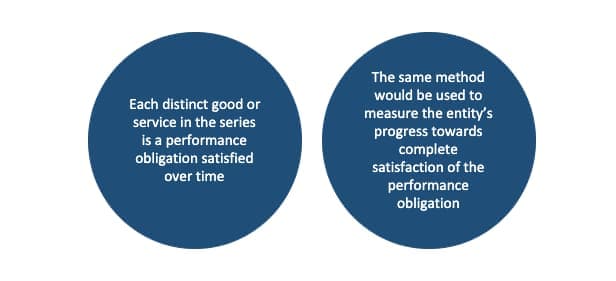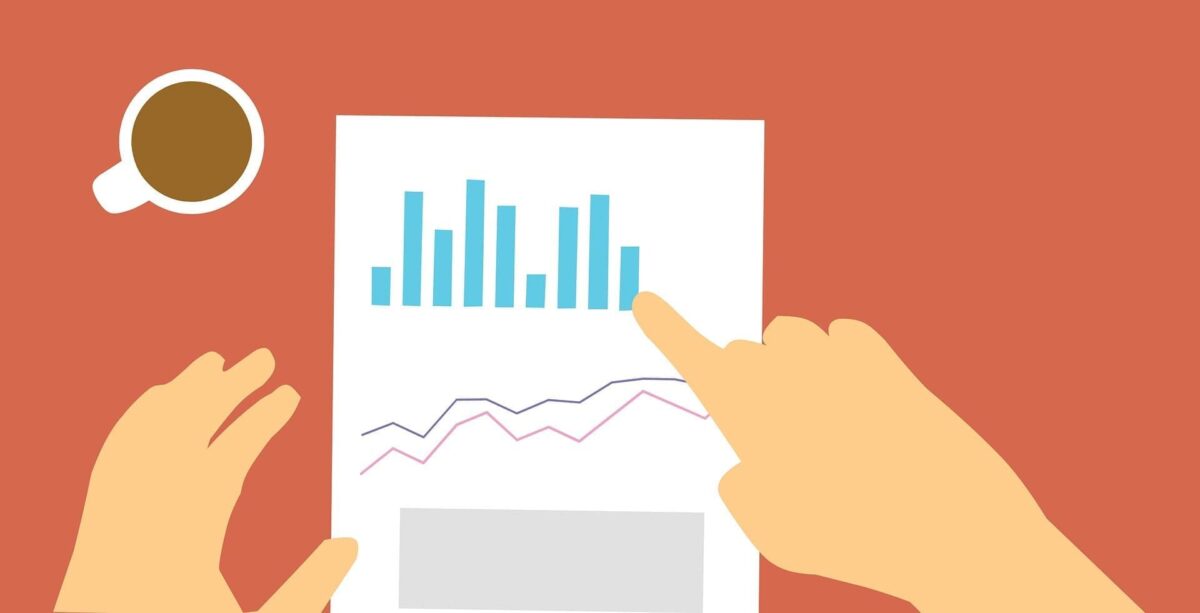Revenue is undoubtedly the main element and focuses for any profit-oriented entities. IFRS 15 Revenue from Contracts with Customers governs the accounting principles for revenue recognition. The International Accounting Standards Board (“IASB”) introduces IFRS 15 in May 2016. It provides a single comprehensive framework for all revenue arising from contracts with customers.
The introduction of IFRS 15 replaces various standards and interpretations as follows:
- IAS 18 Revenue
- IFRIC 13 Customer Loyalty Programmes
- IAS 11 Accounting for Construction Contracts
- IFRIC 15 Agreements for the Construction of Real Estate
- IFRIC 18 Transfers of Assets from Customers
- SIC-13 Revenue – Barter Transactions Involving Advertising Services.
IFRS 15, however, scopes out the following type of contracts:
- Lease contracts – which is subject to IFRS 16 Leases
- Insurance contracts – which is subject to IFRS 4 Insurance Contracts
- Financial instruments and other contractual rights or obligation within the scope of IFRS 9 Financial Instruments
- Non-monetary exchanges between entities in the same line of business to facilitate sales to customers or potential customers.
Let us now dive deeper into how entities account for and recognise their revenue from contracts with customers.
The Revenue Recognition framework
The revenue recognition framework aims at providing a single framework for entities in all industries to recognise their revenue from contracts with customers consistently.
IFRS 15 defines a customer as “a party that has contracted with an entity to obtain goods or services that are an output of the entity’s ordinary activities in exchange for consideration”. For example, if the counterparty contracted with an entity to participate in an activity or process where both share in the risks and benefits, such a counterparty is not a customer.
The 5-step of Revenue Recognition
The 5-step in revenue recognition framework in IFRS 15 are as follows:

The objective of the 5 steps above is to ensure that entities recognise revenue that depict the transfer of promised goods or services to customers. The revenue reflects the amount of consideration that the entities expect to be entitled in exchange for goods and services.
We will now discuss the five steps in detail. Due to the length of discussion, this article however, discusses Step 1 and Step 2. The remaining 3 steps of revenue recognition are available in Part II of IFRS 15.
Step 1: Identifying the contracts with customers
The first step is for an entity to assess whether there is a contract with a customer. This requires an entity to determine whether a contract exists at the inception. Once determined, entities do not need to reassess unless there is an indication of a significant change in facts and circumstances.
IFRS 15 defines a contract as “an agreement between two or more parties that creates enforceable rights and obligations”. This is however, it is a matter of law. It is not necessary for a contract to exist merely by written agreement. This means a contract may also exist orally or implied by an entity’s customary business practices. Entities must consider their business practices and processes in determining whether and when an agreement with a customer creates enforceable rights and obligations.
Conditions of a contract
Entities account for a contract with a customer under this standard if it meets all of the following criteria:
- Contract approval and commitment – The parties to the contract have approved the contract, either in writing, orally or in accordance with other customary business practices. The parties to the contract commit to performing their respective obligations.
- Identification of rights – the entity can identify each party’s rights regarding the goods or services.
- Payment terms – entities can identify the payment terms for the goods and services.
- Commercial substance – the contract has commercial substance, i.e., the risk, timing or amount of the entity’s future cash flows will change as a result of the contract.
- Collection of consideration is probable – It is probable that the entity will collect the consideration. For the purpose of this assessment, entities only consider the customer’s ability and intention to pay when payment is due.
Treatment for contracts not meeting the conditions
In this situation, entities continue to assess whether they will meet the conditions subsequently. If an entity receives consideration although not meeting the conditions, it recognises a liability. Entities recognise a liability until they meet the criteria above.
Entities recognise revenue only in one of the following events:
- There are no remaining obligations due from the entity to transfer goods or services and all, or substantially all, of the consideration promised by the customer has been received by the entity and is non-refundable.
- The contract has been terminated and the consideration received from the customer is non-refundable.
A contract does not exist if each party to the contract has the unilateral enforceable right to terminate a wholly unperformed contract without compensating the other party.
Combination of contracts
Entities may need to enter into multiple contracts at the same time or near the same time. This is common for Islamic transactions. Entities enter into few contracts at the same time with the same party for the purpose of meeting Shariah requirements. Nevertheless, this arrangement can also take place for conventional transactions.
The question is then, should entities asssess each contract separately? Or should entities combine them together? Assessing each of the contract separately may lead to a different accounting conclusion as compared to assessing them in combination.
IFRS 15 allows an entity to combine two or more contracts entered into at or near the same time with the same customer (or related parties of the customer) and account as a single contract. This is only when the contracts meet one or more of the following criteria:
- Firstly, the contracts are negotiated as a package with a single commercial objective.
- Secondly, the amount of consideration in one contract depends on the price or performance of the other contract.
- Lastly, the goods or services promised in the contracts (or some goods or services) are a single performance obligation.
Contract modifications
It is also common for an entity and customer to enter into contract modification subsequent to its inception. For example, contract modification through a change order, variation order or as an addendum to the original contract. IFRS 15 defines a contract modification as “a change in the scope or price (or both) of a contract that is approved by the parties to the contract.”
A contract modification can either creates new or changes existing enforceable rights and obligation of the parties to the contract. When there is a contract modification, an entity determine whether it accounts for such modification as a separate contract.
Entities treat a contract modification as a separate contract if both of the conditions below are present:
- Firstly, the scope of the contract increases because of the addition of promised goods or services that are distinct; and
- Secondly, the price of the contract increase by an amount of consideration that reflects the entity’s stand-alone selling prices of the additional promised goods or services and any appropriate adjustments to that price to reflect the circumstances of the particular contract.
Step 2: Identifying performance obligations
When there is a contract with a customer, an entity determines goods or services promised in the contract and identify as a performance obligation for each promise to transfer to the customer. Entities determine the performance obligations at the contract inception.
The performance obligations is not limited to the goods or services that are explicitly stated in that contract. A performance obligation may also include promises that are implied by the entity’s customary business practices, published policies or specific statements that create a valid expectation that the entity will transfer a good or service to the customer, assessed at the time of entering into the contract.
A performance obligation for each promise to transfer to the customer is either:
- A good or service (or a bundle of goods or services) that is distinct; or
- A series of distinct goods or services that are substantially the same and that have the same pattern of transfer to the customer.
A series of distinct goods or services have the same pattern of transfer if it meets both of the following:

Distinct goods or services
The next question is how do we know whether the goods or services promised in the contract are distinct? For this, IFRS 15 states that a good or service is distinct if it meets both of the following criteria:
#1: The customer can benefit from the good or service either on its own or together with other resources that are readily available to the customer
This means that the good or service could be used, consumed or sold for an amount that is greater than scrap value or held in a way that generates economic benefits.
#2: The entity’s promise to transfer the good or service is separately identifiable from other promises in the contract
This is to determine whether the nature of the promise is to transfer each of those goods or services individually or to transfer a combined item. Factors that indicate two or more promises are not separately identifiable include the following (not exhaustive):
- A significant service of integrating the goods or services with other goods or services promised in the contract into a bundle of goods or services is provided by the entity. The bundle of goods or services represent the combined output(s) for which the customer has contracted with the entity.
- One or more of the goods or services significantly modifies or customises, or are significantly modified or customised by one or more of the other goods or services promised in the contract.
- The goods or services are highly interdependent or highly interrelated -i.e., each of the good or service is significantly affected by one or more of the goods or services in the contract.
If the promised good or service is not distinct, entities combine that good or service with other promised goods or services until it identifies a bundle of goods or services that is distinct.
Conclusion
The above concludes the first two steps of revenue recognition. Entity has determined whether it has a contract with a customer and the performance obligations in the contract. In Part II, we will understand how an entity accounts the performance obligations and how entities should recognise revenue.
Meanwhile, enjoy other articles in the Financial Accounting section.

